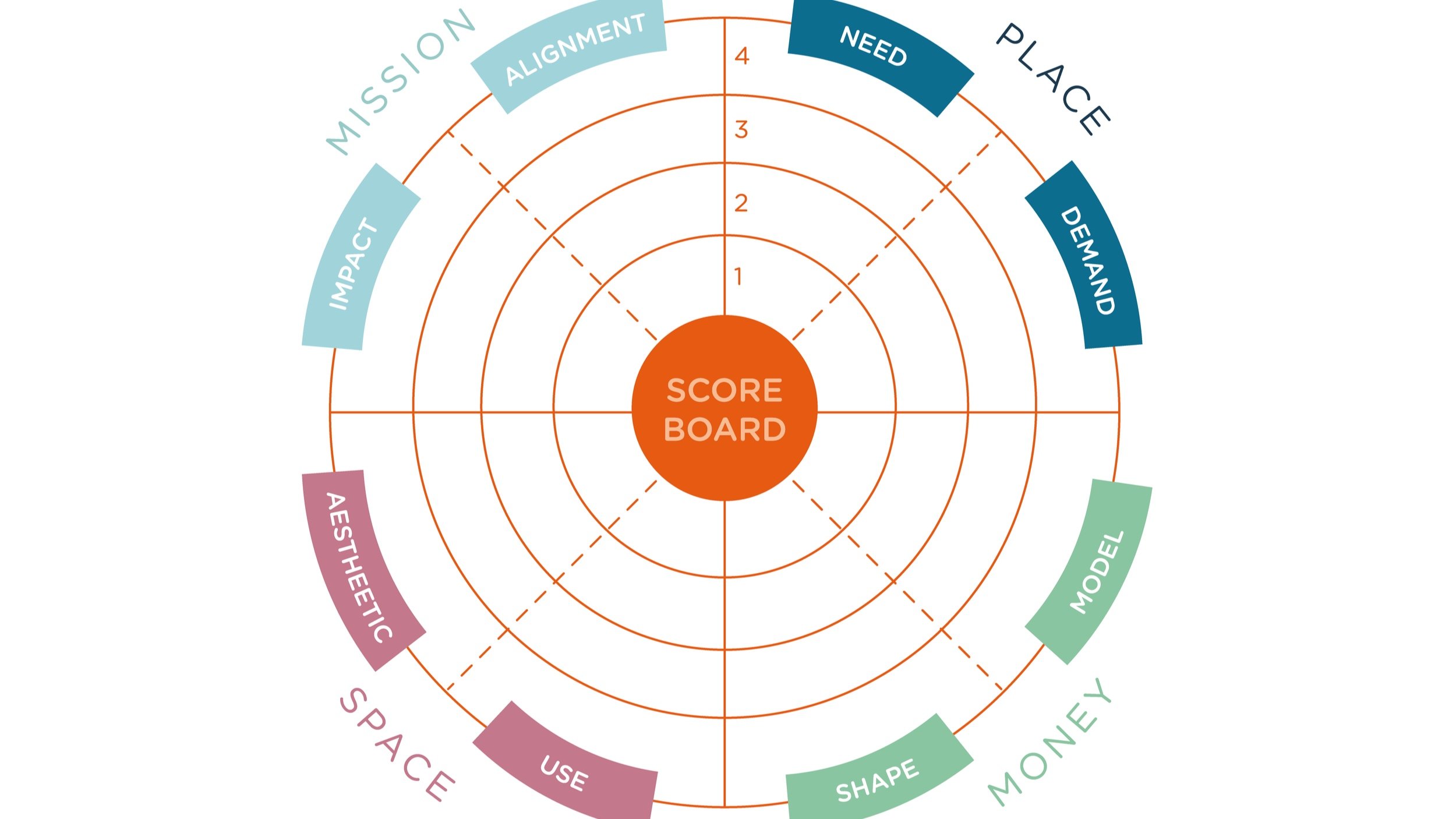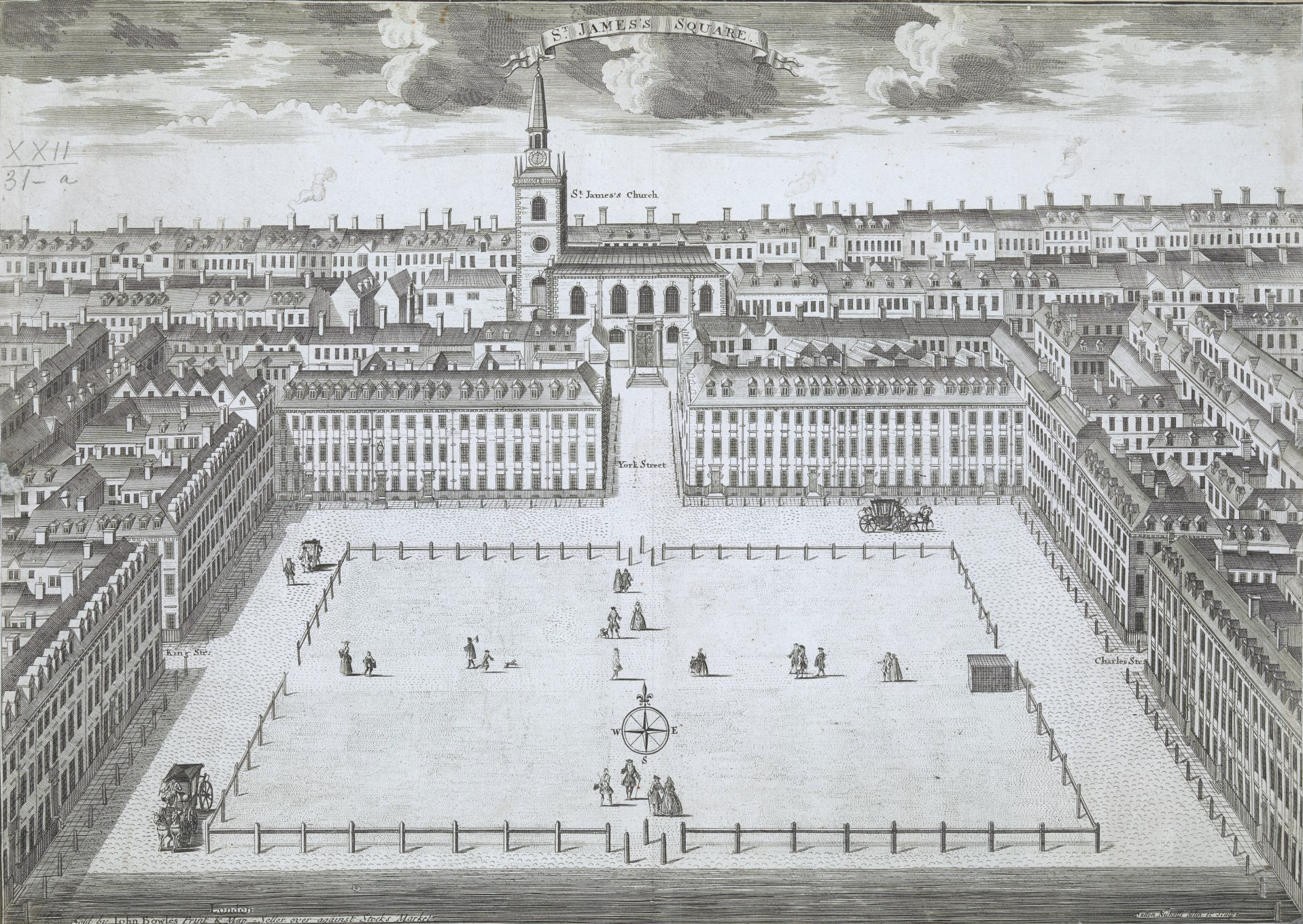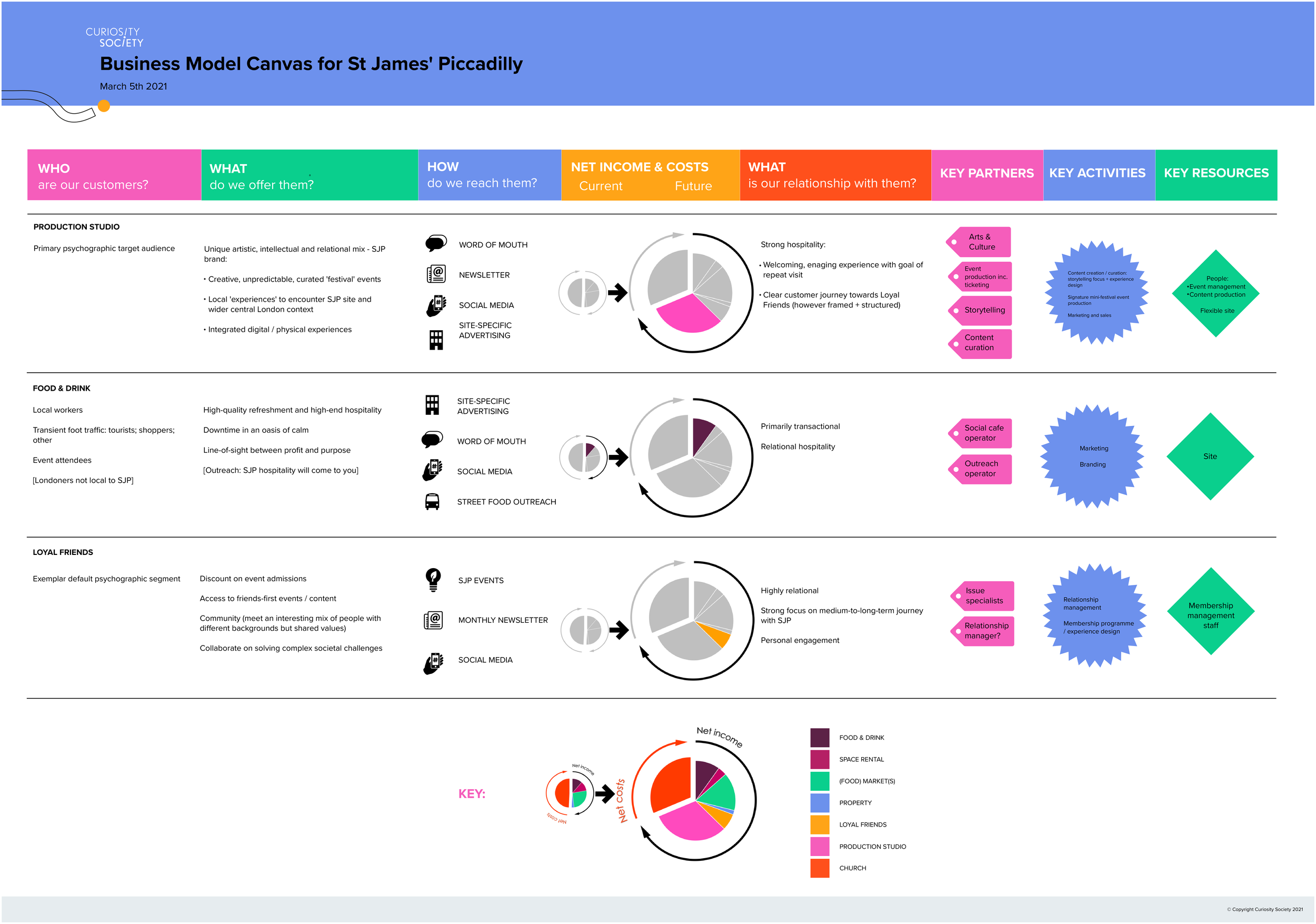
CASE STUDY
St. James’s Piccadilly
St. James’s Piccadilly is a church.
If you think you know what that means, then you haven’t met SJP.
The Client: a reimagined church in a secular society (it’s not what you think)
What do you think when you hear the word church? Whatever it is, it probably isn’t St. James’s Piccadilly. Think of the expensive part of a Monopoly board: Bond Street, Regent Street, Park Lane, Mayfair; and you’d be in the right area, but the wrong frame of mind. SJP is certainly a physical emblem of changing values in society: a gloriously modest Christopher Wren church built on faith, community and society, surrounded by the competitive, individualist, look-at-me edifices of modern, secular, capitalism. There are 500 people in the congregation, but 20 million who walk past the gates in a year, on their way to and from work, shopping and sightseeing. The numbers tell their own story. But amidst all that pandemonium, and definitely after a pandemic, SJP has an eternally relevant question to ask everyone: what does it mean to be human?
Then: when the church stood tallest.
And now: the church eclipsed by capitalism.
The Challenge: aligning mission, model, and money
SJP had been sketching ideas for a physical redevelopment of its Piccadilly site for more than 20 years and now it was ready to build them, (or, at least, ready to raise the £20m that was going to take) but with the wisdom to know that some shiny new buildings were only valuable because of their purpose. That defined SJP’s challenge, and our wonderfully systemic brief: to help align the mission, model and money of the organisation to create the impact SJP wanted to have in the world. It was a perfect fit for us. It turned out to be a metaphor too: if social enterprise was created by the joining together of society and enterprise, what better place for the marriage than SJP?
What We Did: joining-up learning and design; acting-out our own advice
The metaphor of SJP marrying society and enterprise really helped shape our work. It allowed us an access-all-areas pass to the success of social business: governance; business models; finances; and impact. And, in a rare treat from a client, join the dots between learning and design so that everything we were seeing became not so much a verdict on what had gone before, but a direct line-of-sight to what should come next.
We got to co-design a dynamic theory of change with impact measures; hear some beautiful stories from the future that reduced many of us to tears; de-construct and re-construct a business model built on customers, propositions, partners and resources; make a gift of a complex financial model so that SJP owns the means to test its economic future when we’re not there anymore; and co-create a new leadership team including engaging with their recruitment and induction.
It’s unusual for consultants to hand over the keys to a financial model (most want to keep it behind a paywall) or stray into acting on their own recommendations (most want to avoid the exposure of testing their own advice). We were able to do both because of the depth of mutual trust in, and from our client.
A theory of change built from inspiration, creativity and justice
A business model built from insight
What Happened: information is not in short supply, insight is.
The insights we developed with SJP were decisive in shaping the future. Insights that resulted in the organisation pivoting away from the schizophrenia of raising money in one silo and doing good with it in the other. That old thinking had landed them with a coffee shop operator that was very far removed from their values. That’s all changed now.
The insight that SJP could be a producer as much as a venue has fortified their curation of stories, exhibitions and festivals with an authentic voice and a bravery that you wouldn’t expect almost anywhere else: constructing a replica of the 8m high concrete Israel/Palestine border wall, to help Londoners feelwhat it’s like when you divide the world; or hanging a punctured inflatable boat and lifejackets from the ceiling in the church to humanise the toxic political rhetoric about migration.
The insight that SJP can be both a disruptive advocate and a disarming friend has anchored the idea of a new food market at SJP as a melting pot of debate and hospitality, using some simple humanity to hose-down the fires started by culture wars.
The insight that SJP doesn’t stop at the red line drawn on the Land Registry boundary has allowed the team to imagine telling stories written into the steel and stone of the city around them, going to where people are rather than enforcing people’s attendance. We memorably prototyped that with a Labyrinth storytelling route on the theme of taking back control.
Spending £20m on the buildings will change how SJP looks and feels, spending time on their mission, model and money will change who they are.
“As a result of our work with the Curiosity Society, St James’s better understood where we were, not just by collecting information but by developing insight. And they helped us craft a new, braver, more mission-aligned model, to make real the aspirations we had of making the world a better, more just, place. They took us more seriously than we took ourselves at times, and gave us courage to step forward when it might have felt easier to stay where we were.”
The Reverend Lucy Winkett, Rector of St. James’s Piccadilly




